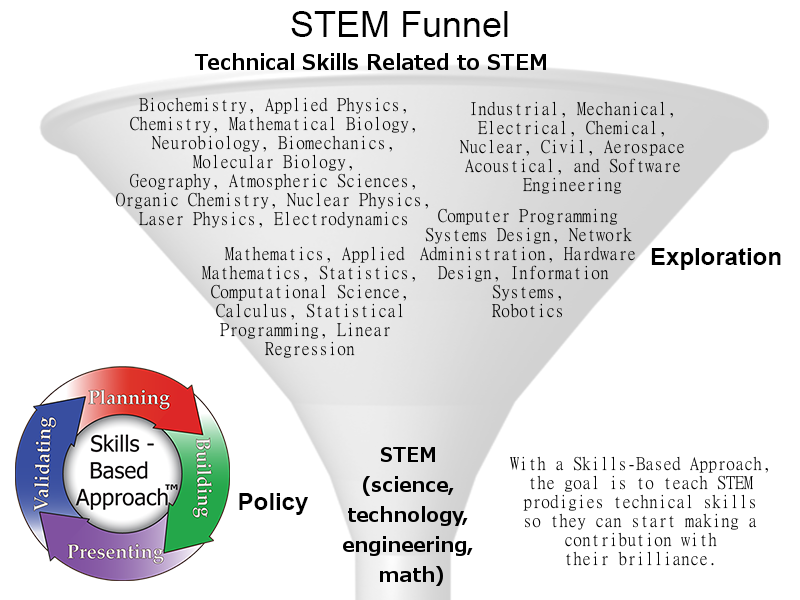Supporting STEM (“science, technology, engineering and mathematics”) programs are becoming increasingly important in education policy. The last two presidents have created or amended initiatives to improve the preparedness of our workforce in STEM fields (Bush with the American Competiveness Initiative and Obama with Mathematics and Science Partnership)[1] It impacts our economy and job market, especially as competition for STEM jobs goes global. We currently have a shortage of skilled workers in STEM fields; many high tech companies look for skilled laborers from other countries (demonstrated by rise in visa applications). There are a few topics worth discussion regarding STEM.
First, it is important to identify STEM prodigies early. You want to ensure they get the proper education, because technology is so sophisticated and it takes years to learn technical skills. For example, think about the millions of lines of codes running an operating system or search engine; to make a contribution to this type of complex system, a computer engineer must have years of technical experience and knowledge. Second, there must be an education structure to teach necessary technical skills. Teachers need the skills and resources to build their students’ skills. Third, there should be a vehicle to market the skills of a prodigy. They need to get their invention out in the public domain.
Once a STEM prodigy is discovered, it is important to fuel their growth and market their skills as soon as possible – so identifying their aptitude at an early stage is advantageous. Exposing children to STEM is important. Two suggestions are to improve science and math education in K – 12 and strengthen the skills of teachers by training them in science, math, and technology. Also, start teaching engineering as early as elementary school. Later in their life, you want to put prodigies on a path of enlightenment. For example, if a student has a perfect score on the math section of their SAT and a low score on the verbal section, then make sure he or she still gets into a top engineering university.
STEM fits with a skills-based approach. STEM fields simply acts as the bottom of a funnel. Many skills make up a particular field, for example, think about how many different types of engineering skills there are: industrial, mechanical, electrical, nuclear, chemical, etc. So it is easier to make education policy decisions based on STEM fields. The prodigies target building technical skills rather than transferable skills; their genius comes from command of transferable skills such as computational thinking or critical reasoning. I read an article about how a Chinese teenage prodigy was put on the fast track to lead a cutting-edge DNA project, for example. Get these prodigies on course to understand the current technology and applications in their chosen discipline, so they can use their brilliance to make a contribution.
[1] STEM fields Wikipedia: http://en.wikipedia.org/wiki/STEM_fields
